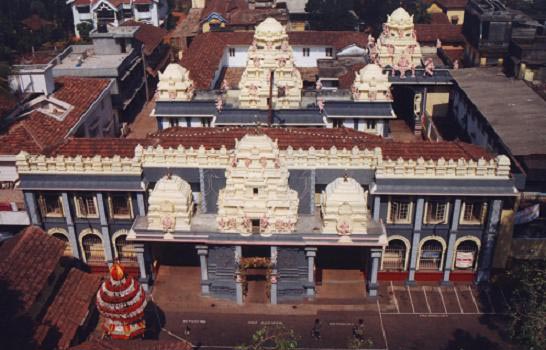Shri Sharavu Mahaganapathi Temple

Information of Shri Sharavu Mahaganapathi Temple, Mangalore, Dakshina Kannada, Karnataka
Maha Ganapathi Temple at Sharavu is the famous Ganapathi temple and a great Hindu pilgrim center in south Kanada region. It is located at Sharavu Village, City Mangalore, Dakshina Kannada District of Karnataka State in India. The temple is widely known and is visited by huge number of devotees from the state and well as from various cities and states of India.
Shri Sharavu Mahaganapathi Temple Religious Significance
Here devotees come to seek the blessings from Lord Ganesha, he is an all rounder god and liked by all sects of Hindu peoples. This temple also consist idols of his father, the Lord Shiva. The Shivik believers do come here as pilgrims yearly. The Vinayaka Chathurthi is grandly celebrated here. Its main festivals are the Car festival and the lamp festival. This is thronged by many pilgrims. This festival also has cultural programs like classical dance and vocals.
Shri Sharavu Mahaganapathi Temple Mythology & History
There is a Kings story behind this temple. The Veerabahu, a King of Tuluva Dynasty was hunting in these forest areas. He mistakenly killed a cow when he was aiming an arrow to a tiger. To get salvation from the sin, he took advice from a sage located in the same forest. He obeyed a sage's suggestion to build a Shiva temple here. He will get salvation when the temple is constructed and proved free food for 1 lakhs Brahmans. The king did the same and was relived from the sin, since the cows are considered as a Hindu's sacred animal and a Vahana and Guard for Lord Shiva. That's why a Shiva temple is built here. A miracle happened, when a Ganapathi like designs was felt in its walls, many sages believed that Lord Ganapathi, son of Shiva came and settled here. Hence, this place is known as Maha Ganapathi temple in the later years.
Shri Sharavu Mahaganapathi Temple Architectural Significance
Maha Ganapathi Temple is built in the Dravidian and the Malabar temple architect forms. The main components of these structures are the lateraite stones, teak woods, metals and granite stones. Near the entrance a large pond is built here. This is a man made pond by stone blocks. The entire structure of this temple is built in a square shape. These are having 8 Gopuras (Temple Tower) on its tops. The main structure is found on the Dravidian style. It has got a huge wall on all side of this temple. There is a huge entrance built on a small mandapa (Porch) which is standing on a high pillars. On its top there are three gopuras built on it. The center gopura is a big one and the other two placed in its adjacent side with little bit smaller in size. The main entrance with his beautiful gopuras looks very much ornate with designs. The inner complexes are found in typical Malabar style. These are the central areas were the gods are placed, either the main garbha Graha of this temple. These structures are built of laterite stones and have terracotta tile roofs on its top. These are placed in slanting positions to look in a triangular or in the pyramid shapes. Its roofs have a grilled structure with wooden bars, there are many designs carved on its beams and joint areas of these woods. The main deity is placed in the center of this temple. Here one can find a small Nandhi statue looking the main deity from outside this temple in the inner complex itself. There are other few mini temples built here which are looking cute. Its idols are found on stone carved, metal formed on silver and brass. Many parts of this temple have brass bells hanged on its roofs. This temple has got its on Ratha; it is taken out only for processions on festival days. It also got a beautiful deepa sthampa (Lamp Tower). The inner complex is looking very marvelous with oil lit lamps and the metal idols and jewels found on deity are sparkling on this lams light.
Thus from all sphere, the temple is well organized making it easier for devotes and the visitors to enjoy darshan and offer prayer inside the temple.
- Andhra Pradesh Temples
- Assam Temples
- Bihar Temples
- New Delhi Temples
- Goa Temples
- Gujarat Temples
- Jammu and Kashmir Temples
- Karnataka Temples
- Kerala Temples
- Madhya Pradesh Temples
- Maharashtra Temples
- Odisha Temples
- Punjab Temples
- Rajasthan Temples
- Sikkim Temples
- Tamil Nadu Temples
- Telangana Temples
- Uttar Pradesh Temples
- Uttarakhand Temples
- West Bengal Temples